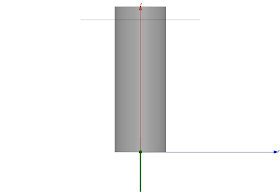Some basics:
In antenna terminology, this is an “open-ended waveguide”. Practically speaking that just means a hollow metal tube excited in a way that radiates electromagnetic energy. You pick the diameter of the tube according to the frequency band you want to work in. The length and diameter of the tube determine the antenna’s radiation pattern. You excite the cantenna with a coaxial cable and it will transmit your signals – it’s as simple as that!
http://en.wikipedia.org/wiki/Image:Coke-cantenna-SV1ML-0a.jpg
Uses:
As luck would have it, many can sized cylinders are good for the 2.4 GHz ISM band. This could be useful for connecting a laptop to the internet in a remote location or connecting to a free Wi-fi network from your home. Most 802.11 standards fall into this band: 802.11b and 802.11g use 2.4GHz. 802.11n can use both 2.4GHz and 5 GHz, but you can get away with only the 2.4GHz signal - it propagates better over long ranges anyway.
I have a slightly different application: The Ramsey SG7 Speedy Radar Kit operates at 2.6GHz.
(http://www.ramseyelectronics.com/cgi-bin/commerce.exe?preadd=action&key=SG7 ) This is a little Doppler radar kit that I’m putting together.
How it works:
Inside waveguides, electromagnetic fields can only exist in certain patterns called “modes.” The best cantenna designs excite one and only one mode. This is for several reasons: different modes actually travel at different speeds down the waveguide, known as “dispersion.” This can cause a problem for signals by spreading out pulses making them harder to receive. Also, different modes have different radiation patterns. Shown below is one transverse electric (TE) and one transverse magnetic (TM) mode – the main types for circular waveguide.
First let’s look at the TE11 mode a.k.a. the “dominant mode” for circular waveguide. Shown below is a side view of the waveguide and feeding coax. The grey rectangle is the cantenna, with a small green colored coax cable attached with the center conductor extending into the can. This should be one-quarter of a wavelength (in the guide!) from the back of the can, and it will excite the TE11 mode: electric fields are plotted in red and magnetic fields are plotted in blue.
Now suppose you fed the cantenna from the back instead of the bottom. This will excite a different mode than what was shown above. This is the TM11 mode (electric fields are plotted in red and magnetic fields are plotted in blue).
How to pick a diameter:
As mentioned before, you want to excite only one TE mode. You do this by picking a can diameter large enough to allow the TE11 mode but small enough to block (“cutoff”) the TM01 mode. To repeat: if the 808.11b/g frequency band goes from 2.412-2.462GHz then you want the TE11 mode to work at 2.412GHz and the TM01 mode to NOT work at 2.462GHz.
Look at http://www.turnpoint.net/wireless/cantennahowto.html for an online calculator or you can run through the equations yourself:
(From Kraus’ Electromagnetics 8-5 “The Hollow Cylindrical Waveguide”)
TE11:
This mode will work if f = 2.412GHz > fcutoff = 2*c/(3.41*D)
TM01:
This mode will not work if f = 2.462GHz < fcutoff = 2*c/(2.61*D)
You want:
fcutoffTE11 < f < fcutoffTM11
2.87” < D < 3.67”
Practically speaking, while the lower bound is important – the can’s diameter MUST be larger than 2.87” to work at 2.4GHz – the upper bound is not such a hard boundary.
What’s next:
· Cantenna Simulations
· Radar and Antenna Construction
· Cantenna Improvements
References:
· Cantenna – Wikipedia http://en.wikipedia.org/wiki/Cantenna
· How To Build A Tin Can Waveguide WiFi Antenna http://www.turnpoint.net/wireless/cantennahowto.html
· Wlan antenna Waveguide type http://www.saunalahti.fi/elepal/antenna2.html






My intern at MSU made a radar out of a pair of cantennas:
ReplyDeletehttp://home.gwu.edu/~mvolz/radar/
We did not have any cash to buy real antennas, but these worked out well. The trick was to find the correct size coffee can for L-band :)
I really had a great time with your post! I am best essays looking forward to read more blog post regarding this! Well written!
ReplyDeleteNice explained. Here we have come up with new solution named Miot Wireless Solutions which provides one stop solutions and best-in-class compact, high-gain 3G, 4G/LTE and 5G Cellular and Wi-Fi Antennas for connected smart devices and today’s high-performance LTE networks. For more details please visit www.miotsolutions.com
ReplyDelete